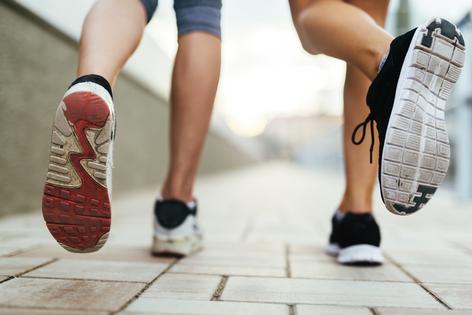Mayo Clinic Q&A: Staying safe while running
Published in Health & Fitness
DEAR MAYO CLINIC: I’m training for my first long-distance race, and I want to be safe on my runs. Unfortunately, due to where I live, the weather is often a challenge. On other days, I’m finding I cannot get in my miles until after dusk. I’m wondering if you have any advice for staying injury-free in cold, rainy or dark conditions.
ANSWER: Training for a distance race means logging a lot of miles — sometimes in cold, rainy or hot weather, sometimes in the early morning or in the evening, sometimes on streets or country roads. No matter the weather, time of day or route, taking precautions to be safe during all your training runs is important.
There are many things to consider safety-wise when outdoors, but among the top on my list are being visible, whether to drivers, bicyclists or other runners on the road or trail; preventing injury; and being able to summon help if you need it.
You can address these concerns by developing and practicing safe running habits. Having the proper basic gear — down to your socks and shoes — is essential. Also, take advantage of high-tech gadgets designed for runners, such as LED-enhanced gear for running at night and phone apps to track your progress and help motivate you.
Preparing to run
Dress for the weather and be aware of the forecast. Weather conditions can change rapidly, so consider adding lightweight rain gear or extra gloves to a cinch bag you carry with you.
Be visible. Wear bright colors. In poor light conditions, consider reflective or LED-lighted gear. Check out these products at your local sporting goods store, a running specialty shop or online. Some safety gear includes lighted shoe clips, wrist bands, knuckle lights, vests and headlamps, as well as reflective vests and wrist slap bands.
Wear well-fitting shoes and low-friction socks. Consider these tips for making sure your shoes fit properly:
Replace shoes when needed. Your shoes are going to get a workout as you train. In general, a pair of running shoes lasts 400 to 500 miles or three to four months. Keep an eye on the midsoles and outsoles. If they’re compressed or worn, it’s time to buy a new pair.
Apply anti-chafing agents to “tender” areas. When you run, body parts can rub together or against clothing. This causes friction, which wears away your skin. Sweat can increase chafing. Places to consider protecting include the inner thighs, groin and nipples.
Let someone know your route and what time you expect to return. Vary your routes for safety and to keep you from getting bored during your training runs.
Consider running in a group for safety, camaraderie and motivation.
Helpful gadgets
Tips while running
Don’t forget to warm up before a run so you can avoid injuries while running. Be safe and enjoy your training runs. — Karla Marley, Physical Therapy, Mayo Clinic Health System, La Crosse, Wisconsin
(Mayo Clinic Q & A is an educational resource and doesn’t replace regular medical care. This Mayo Clinic Q&A represents inquiries this healthcare expert has received from patients. For more information, visit www.mayoclinic.org.)
©2024 Mayo Foundation for Medical Education and Research. All Rights Reserved. Distributed by Tribune Content Agency, LLC.










Comments